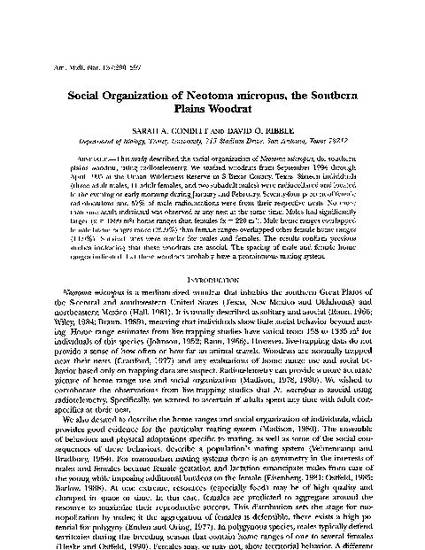
- Biology and
- Life Sciences
This study described the social organization of Neotoma micropus, the southern plains woodrat, using radiotelemetry. We studied woodrats from September 1994 through April 1995 at the Urban Wilderness Reserve in S Bexar County, Texas. Sixteen individuals (three adult males, 11 adult females, and two subadult males) were radiocollared and located in the evening or early morning during January and February. Seventy-four percent of female radiolocations and 57% of male radiolocations were from their respective nests. No more than one adult individual was observed at any nest at the same time. Males had significantly larger (x = 1899 m2) home ranges than females (x = 220 m2). Male home ranges overlapped female home ranges more (35.9%) than female ranges overlapped other female home ranges (11.9%). Survival rates were similar for males and females. The results confirm previous studies indicating that these woodrats are asocial. The spacing of male and female home ranges indicated that these woodrats probably have a promiscuous mating system.
